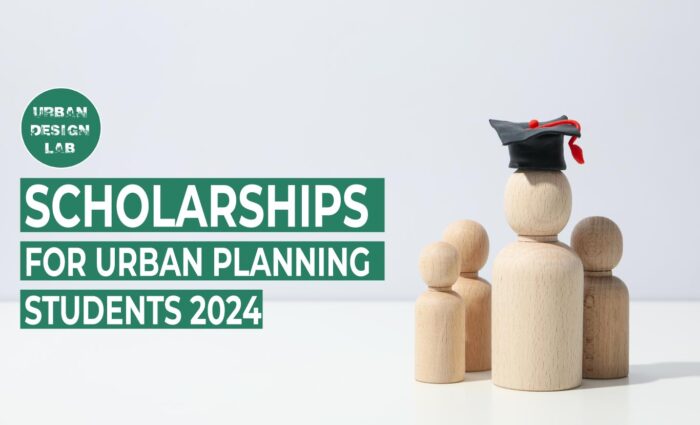But as with any grand adventure, there was a dragon to slay: the cost of education. Pursuing a degree in urban planning, especially at the graduate level, seemed like a mountain too high to climb for someone like me, without a trust fund or a lottery win. The tuition fees, living expenses, books, software – it all added up to a sum that made my head spin. I almost let that dream wither before it had even truly bloomed. I mean, who wouldn’t be intimidated by the numbers scrolling across university websites? It felt like a cruel gatekeeper, telling me my passion wasn’t enough.
Then, one quiet evening, while drowning in worry and countless browser tabs, I stumbled upon a glimmer of hope: urban planning scholarships. It was like finding a hidden alleyway in that bustling city, a shortcut, a helping hand. The idea that there were organizations, universities, and individuals willing to invest in aspiring planners like me felt revolutionary. It wasn’t just about financial aid; it was about validation, about someone believing in the future you wanted to build. From that moment, my focus shifted from "how can I ever afford this?" to "how do I find and secure these scholarships?" It became a mission, a puzzle to solve.
Let me tell you, this isn’t some secret club. Urban planning scholarships are out there, waiting for folks who are passionate, dedicated, and ready to make a difference in our cities and towns. They come in all shapes and sizes, much like the cities we aim to plan. You’ll find them for undergraduate students just starting their academic journey, for master’s candidates diving deep into specialized areas, and even for PhD students pushing the boundaries of research. There are scholarships specifically for international students, for those from underrepresented backgrounds, for people focusing on particular aspects of planning like transportation, environmental sustainability, housing, or community development. The key is knowing where to look and understanding what these opportunities are truly seeking.
My first piece of advice, and something I learned the hard way, is to start early. Don’t wait until you’ve received your acceptance letter to begin your scholarship hunt. As soon as you decide urban planning is your path, begin exploring. Think of it like mapping out a new district – you need to understand the terrain, identify key landmarks, and plan your routes.
The most obvious place to begin your search for financial aid for urban planning is with the universities themselves. Almost every institution offering an urban planning program will have its own set of scholarships. These might be departmental scholarships, specifically for students in the urban planning program, or general university-wide awards that any enrolled student can apply for. I remember meticulously going through each university’s financial aid page, then digging deeper into the specific urban planning department’s website. Sometimes, they’re automatically considered based on your application, but often, there’s a separate application process. Pay close attention to those deadlines; they are just as crucial as the admissions deadlines. Some are merit-based, awarded for academic excellence, while others are need-based, looking at your financial situation. Many combine both.
Beyond the universities, a treasure trove of opportunities lies with professional organizations. The American Planning Association (APA) and its local chapters, for instance, are huge supporters of future planners. They offer various scholarships, often tailored to specific demographics or areas of interest within planning. These organizations understand the importance of nurturing new talent, and their awards often come with the added benefit of connecting you to a network of practicing professionals – something invaluable for your career in urban planning. I spent hours sifting through their websites, reading about past recipients, and trying to understand what kind of profiles they valued most. There are also smaller, more specialized groups focusing on things like transportation planning, historic preservation, or environmental planning, and they often have their own funding opportunities.
Don’t overlook government agencies and non-profit foundations either. Federal, state, and even local governments sometimes offer grants or fellowships for students pursuing fields that align with their public service goals. Think about agencies involved in housing and urban development, transportation, or environmental protection. Many non-profit foundations have missions that directly intersect with urban planning principles – things like promoting sustainable development, addressing housing inequality, or fostering community resilience. These foundations often have very specific criteria, so you’ll need to read carefully to see if your interests and background align. For example, a foundation dedicated to equitable community development might offer scholarships to students focusing on social justice in planning.
For international students, the landscape can feel a bit more complex, but there are definitely scholarships available. Many universities have specific international student scholarships, and some countries’ governments offer scholarships for their citizens to study abroad in fields like urban planning. Additionally, global organizations and foundations sometimes provide funding for international students pursuing advanced degrees in areas critical to global development, which urban planning certainly is. The key here is to be diligent and cast a wide net, looking both within your home country and in the country where you wish to study.
Now, let’s talk about the application itself – the moment where you move from searching to actually putting yourself out there. It can feel like presenting your life story for judgment, but approach it as an opportunity to share your passion and potential.
Your academic record, of course, plays a significant role. Good grades and a solid GPA demonstrate your capability to handle rigorous coursework. But let me be clear: it’s not just about perfect scores. Many scholarships look beyond the numbers. They want to see curiosity, critical thinking, and a genuine engagement with your studies. So, yes, work hard in your classes, but also seek out opportunities to apply what you’re learning, perhaps through research projects or club activities.
The personal statement or essay is often the most crucial part of your application. This is your chance to speak directly to the scholarship committee, to show them who you are beyond your transcripts. I remember agonizing over mine, drafting and redrafting, trying to find the right words. My advice? Tell a story. Don’t just list your accomplishments; explain why urban planning matters to you. What specific experiences led you down this path? What problems in the world do you hope to solve through planning? Connect your personal narrative to the broader challenges and opportunities in urban environments. If you’re interested in sustainable cities, talk about an experience that ignited that passion. If housing affordability is your focus, share a moment that made you realize its importance. Be specific, be authentic, and let your passion shine through. Avoid generic statements and instead, illustrate your points with vivid examples. Show them you understand the impact of urban planning on real lives.
Letters of recommendation are another vital component. Choose your recommenders wisely. Don’t just pick the professor who gave you an A; pick the one who knows you well, who can speak to your character, your work ethic, and your potential as an urban planner. Maybe it’s a professor who oversaw a project you were particularly proud of, or a supervisor from a relevant internship or volunteer position. When you ask someone for a letter, make it easy for them. Provide them with your resume, your personal statement (or a draft of it), the scholarship’s criteria, and the deadline. Remind them why you’re passionate about urban planning and what you hope to achieve. A strong, thoughtful letter can really make a difference.
Your resume or CV should be more than just a list of jobs. Tailor it to highlight experiences relevant to urban planning. Did you volunteer for a community garden project? Work on a campus sustainability initiative? Participate in a student urban planning club? Even seemingly unrelated jobs can be framed to show transferable skills like problem-solving, teamwork, or data analysis. Emphasize any internships, research projects, or leadership roles that demonstrate your commitment and growing expertise in the field.
For those pursuing urban design or architecture-related planning, a portfolio might be required. This is your visual narrative, showcasing your design skills, your ability to think spatially, and your understanding of urban form. It doesn’t have to be filled with grand, finished projects; sketches, conceptual ideas, and even academic projects can demonstrate your potential.
Some scholarships may also require an interview. This is your chance to further articulate your vision and enthusiasm. Practice answering common questions about your goals, your understanding of urban planning challenges, and why you believe you are a strong candidate. Be prepared to discuss your essay and your experiences in more detail. Show confidence, but also genuine curiosity and a willingness to learn.
To truly stand out in a competitive pool, you need to show more than just good grades. You need to demonstrate a proactive engagement with the field. This could mean volunteering with local community groups, attending city council meetings, participating in planning workshops, or even starting your own small project related to urban issues. These experiences not only bolster your application but also deepen your understanding and commitment to the field. I remember volunteering for a neighborhood revitalization project, and while the work was simple, the insights I gained into community dynamics and bureaucratic processes were invaluable – and I made sure to weave that into my applications.
Consider your research interests. Do they align with current pressing issues in urban planning, such as climate resilience, affordable housing, smart city technologies, or social equity? Showing that you’ve thought deeply about these challenges and have specific areas you’d like to explore can make your application more compelling. Scholarship committees are looking for future leaders and innovators, people who will contribute meaningfully to the field.
Networking, even before you apply, can be surprisingly helpful. Attend virtual or in-person events hosted by planning departments or professional organizations. Connect with current students or alumni on LinkedIn. These connections can offer advice, insights, and sometimes even lead to learning about lesser-known scholarship opportunities. It’s about building a community around your passion.
The types of scholarships for urban planning are quite diverse. Some are fully funded, covering tuition, living expenses, and sometimes even a stipend for research. Others are partial, covering a portion of tuition. Don’t dismiss partial scholarships; every bit of financial assistance helps, and sometimes combining a few smaller awards can add up to a significant amount. There are also fellowships, which often include a research or teaching assistantship component, providing both financial support and valuable professional experience.
I remember the day I received the email confirming a significant scholarship. It wasn’t a full ride, but it was enough to make my dream feel tangible, within reach. The relief was immense, but so was a sense of responsibility. This wasn’t just money; it was an investment in me, in my potential to contribute to better cities. It fueled my motivation even further, pushing me to work harder, to absorb every lesson, and to make the most of every opportunity during my studies.
The journey through urban planning education, supported by scholarships, was truly transformative. It opened doors I never imagined, introduced me to brilliant minds, and equipped me with the tools to tackle complex urban challenges. I learned about sustainable infrastructure, equitable housing policies, community engagement strategies, geographic information systems (GIS), and the intricate dance between policy and design. More importantly, I learned how to think critically, how to collaborate, and how to advocate for communities that often go unheard.
So, if you’re standing at the crossroads, dreaming of a future in urban planning but worried about the financial hurdles, please don’t give up. The path to securing urban planning scholarships might require dedication, perseverance, and a lot of paperwork, but it is a path well worth pursuing. It’s about more than just funding your education; it’s about validating your passion, connecting with a supportive community, and ultimately, empowering you to build the kind of cities and towns we all deserve. Our urban landscapes are constantly evolving, facing new challenges every day, from climate change to social inequality. We need bright, passionate minds like yours to shape their future. Start your search today, tell your story with conviction, and embrace the adventure. The world of urban planning is waiting for you, and there are people ready to help you get there.


